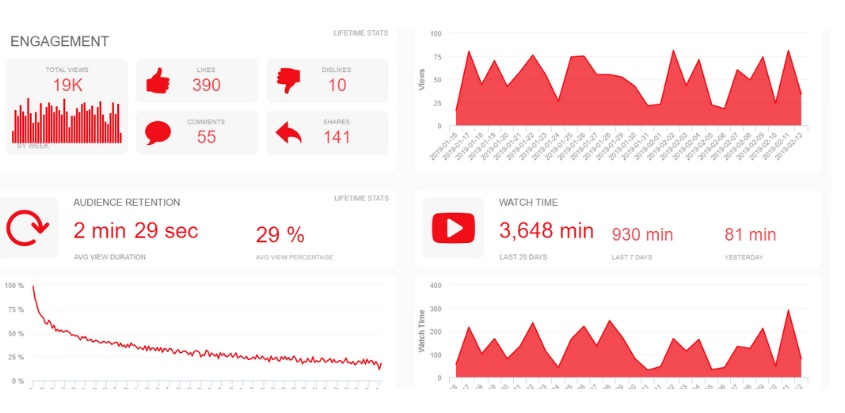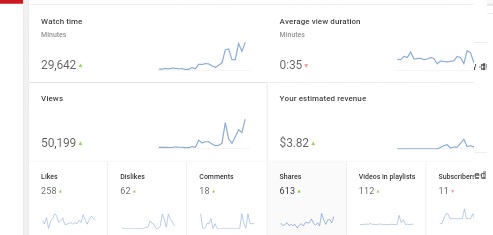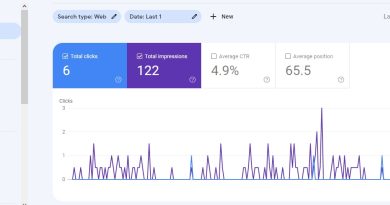How to do seo on youtube videos
Youtube is a good source of earning now a days.If you ever gain popularity in your youtube channel and time to time u are uploading the video then that is a best chance u will earn a lot from various source. Youtube seo can help to gain subscriber and rank well which bring lot of new organic views.
Optimizing Video Content
Title Optimization
Beyond keyword placement, consider user intent. Craft titles that clearly communicate what viewers can expect from the video. This helps in attracting the right audience.
- When optimizing your video title, consider the following:
- Include your target keyword at the beginning of the title.
- Keep titles under 60 characters to ensure they display fully in search results.
- Craft titles that pique curiosity or address a problem viewers might have.
- A well-optimized title might look like this: “YouTube SEO: Boost Your Rankings with These Strategies.”
Description Optimization
- In the video description, remember:
- Start with a concise summary of the video’s content and the value it offers.
- Include your target keyword(s) naturally within the description.
- Provide links to relevant content, such as your website or social media profiles.
- Aim for a description of at least 200 words to maximize the chances of ranking well in search results.
Tags and Categories
- Tags and categories help YouTube understand the context of your video. Here’s how to optimize them:
- Use a mix of broad and specific tags. Include variations and synonyms of your target keywords.
- Choose the most relevant category for your video content.
- Regularly review and update your tags based on performance and changing trends.
Video Production and Optimization
Quality Matters
- High-quality videos are essential for retaining viewers and ranking well. Focus on:
- Good lighting: Ensure well-lit scenes to maintain visual clarity.
- Clear audio: Invest in a quality microphone to capture crisp sound.
- Engaging visuals: Use relevant images, animations, or graphics to enhance your content.
- Consistent branding: Maintain a consistent visual style throughout your videos and channel.
Engagement Metrics
- Engagement metrics, like likes, comments, and shares, indicate viewer interest. Strategies to improve engagement include:
- Encourage viewers to like, comment, and subscribe within your video.
- Reply to comments and foster a sense of community on your channel.
- Create content that encourages sharing, such as tutorials or entertaining videos.
4.3. Thumbnail Optimization
- Thumbnails should be visually appealing and relevant to the video content. Tips for thumbnail optimization:
- Use high-resolution images or custom graphics.
- Add text overlay with a clear, readable font.
- Use contrasting colors and compelling visuals.
- Ensure consistency in thumbnail style across your channel for branding.
Promoting Your Videos
Social Media Promotion
- When sharing your videos on social media:
- Craft engaging captions that highlight the video’s value.
- Use relevant hashtags to increase discoverability.
- Share your video across multiple platforms to reach a wider audience.
- Engage with your social media audience by responding to comments and questions promptly.
Collaborations
- Collaborating with other YouTubers can expand your reach. Consider:
- Finding collaborators with a similar audience or niche.
- Creating content together or featuring each other in your videos.
- Promoting each other’s videos on your respective channels.
Community Engagement
- Building a community on your YouTube channel:
- Respond to comments and engage with viewers.
- Consider hosting live streams or Q&A sessions to interact with your audience in real-time.
- Use community posts to share updates, behind-the-scenes content, or polls to involve your audience.
These detailed insights should provide a comprehensive understanding of each section for creating an effective YouTube SEO article.

How to do seo on youtube videos ?
1. Keyword Research:
- Start with comprehensive keyword research. Identify relevant keywords and phrases that align with your video content.
- Use tools like Google Keyword Planner, YouTube’s auto-suggest feature, or third-party tools like Ahrefs or SEMrush to find keywords.
- Look for keywords with a balance of search volume (how often they’re searched) and competition (how many other videos target them).
- Consider long-tail keywords, which are longer and more specific phrases that can help you reach a niche audience.
2. Optimize Video Title:
- Craft a compelling and concise video title that includes your target keyword near the beginning.
- Make the title attention-grabbing and relevant to the content.
- Keep the title under 60 characters to ensure it displays fully in search results.
3. Write a Detailed Description:
- Create a thorough video description (at least 200 words) that provides context about your video.
- Include your target keyword naturally within the description.
- Mention any relevant information, links, or additional resources related to the video.
4. Use Tags Wisely:
- Add relevant tags that relate to your video content. Include variations and synonyms of your target keyword.
- Use a mix of broad and specific tags to cover different aspects of your content.
- Avoid using irrelevant or misleading tags, as this can harm your video’s ranking.
5. Select the Right Category:
- Choose the most relevant category for your video content. This helps YouTube understand your video’s context.
- If necessary, create a custom category to better match your content.
6. Create an Eye-Catching Thumbnail:
- Design a custom thumbnail that represents your video effectively.
- Use high-quality images or graphics, and include text overlay with a readable font.
- Ensure that your thumbnail is visually appealing and clickable.
7. Engage Your Audience:
- Encourage viewers to like, comment, share, and subscribe within your video.
- Ask questions or prompt discussions in your video to stimulate engagement.
- Respond to comments and foster a sense of community on your channel.
8. Promote Your Video:
- Share your video on various social media platforms, your website, or through email newsletters.
- Collaborate with other YouTubers in your niche to cross-promote each other’s content.
- Share teasers or highlights from your video to build anticipation before its release.
9. Analyze and Adapt:
- Regularly check YouTube Analytics to monitor your video’s performance.
- Pay attention to metrics like watch time, audience retention, and traffic sources.
- Use the data to adjust your SEO strategy for future videos.
Remember that YouTube SEO is an ongoing process. Consistency in creating high-quality content, optimizing it effectively, and engaging with your audience can lead to better rankings and increased visibility for your videos over time.
10. Video Transcript and Closed Captions:
- Upload a transcript of your video, if available. This can help YouTube better understand your content and improve accessibility.
- Consider adding closed captions or subtitles to make your videos more inclusive and accessible to a broader audience.
11. End Screens and Cards:
- Utilize YouTube’s end screens and cards feature to encourage viewers to take specific actions, such as watching another video or subscribing.
- Place these elements strategically throughout your video to maintain viewer engagement.
12. Optimize Video Length:
- Pay attention to video length. While longer videos can provide more value, ensure that the content remains engaging throughout.
- Keep intros concise and get into the main content quickly to retain viewer interest.
13. Engage with Audience Analytics:
- Use YouTube’s Audience Retention report to identify specific parts of your videos where viewers tend to drop off.
- Analyze which content is performing best and consider creating more videos on similar topics.
14. Stay Current with Trends:
- Stay updated with the latest trends, news, and changes in your niche or industry.
- Create timely and relevant content to tap into trending topics, which can boost your video’s visibility.
15. Leverage YouTube Cards for Cross-Promotion:
- Use YouTube Cards to promote other videos or playlists within your channel. Cross-promotion can increase views and engagement across your content.
16. Experiment with Video Formats:
- Don’t be afraid to experiment with different video formats, such as tutorials, reviews, vlogs, or how-to guides.
- Analyze which formats resonate best with your audience and create more content in those styles.
17. Optimize Channel Homepage:
- Customize your channel homepage with relevant sections, playlists, and featured videos.
- Make it easy for visitors to explore your content and discover more videos.
18. Use Video End Screens Effectively:
- Place end screens strategically to encourage viewers to take action at the end of your videos, such as subscribing or watching another video.
- Ensure that the end screens are relevant to the video content.
19. Monitor Your Competitors:
- Keep an eye on your competitors’ channels and their successful videos.
- Analyze what works for them and adapt similar strategies while maintaining your unique voice and style.
20. Regularly Update Older Content:
- Periodically revisit and update older videos with new information, improved thumbnails, or additional annotations.
- This can help boost the visibility and relevance of your existing content.
YouTube SEO is an ongoing effort that requires patience and consistency. By continuously refining your strategies based on analytics data and staying current with YouTube’s algorithm changes, you can steadily improve your video rankings and grow your channel’s audience over time.

How to promote youtube videos?
Promoting your YouTube videos effectively is essential for growing your channel’s audience and increasing visibility. Here’s a detailed guide on how to promote your YouTube videos:
1. Optimize for SEO:
- As mentioned earlier, ensure your videos are optimized for search engines by following the YouTube SEO best practices mentioned earlier. This is the foundation for attracting organic traffic.
2. Leverage Social Media:
- Share your videos on your social media platforms, including Facebook, Twitter, Instagram, and LinkedIn. Craft engaging captions and use relevant hashtags.
- Join relevant groups or communities on social media platforms and share your content there, but make sure to follow the community guidelines.
3. Collaborate with Other YouTubers:
- Collaborations can introduce your channel to a new audience. Partner with other YouTubers in your niche or related niches for cross-promotion.
- Collaborate on videos, participate in interviews, or simply promote each other’s content.
4. Email Marketing:
- If you have an email list, send out newsletters featuring your latest videos.
- Include a compelling subject line and a brief teaser to entice subscribers to click and watch.
5. Utilize Your Website or Blog:
- If you have a website or blog, embed your YouTube videos within relevant blog posts.
- Write accompanying blog posts for your videos, providing additional context and information.
6. Engage with Your Community:
- Respond to comments on your videos to build a strong community. Engagement can lead to higher video rankings and more shares.
- Create polls or community posts on YouTube to interact with your audience.
7. Paid Promotion:
- Consider investing in paid advertising on YouTube and other platforms like Google Ads. YouTube offers various ad formats, including in-stream and discovery ads.
- Set a budget and target your ads to reach your desired audience.
8. Cross-Promote Within Your Videos:
- Include links or call-to-actions within your videos to encourage viewers to watch related content.
- Use YouTube cards and end screens to direct viewers to other videos or playlists on your channel.
9. Engage with Influencers:
- Reach out to influencers in your niche who have a strong following on YouTube or other social platforms.
- Collaborate with them to have your videos mentioned or featured in their content.
10. Run Contests and Giveaways:
This process help to encourage viewers to engage with your channel more. The more giveaways u provide the more chance to connect you. Host contests or giveaways that require viewers to engage with your videos, such as liking, commenting, or sharing.Ensure the rules comply with YouTube’s guidelines.
11. Attend Industry Events and Conferences:
If possible, attend industry events and conferences related to your niche. Network with fellow creators and attendees, share your channel, and make connections.
12. Engage with Subreddits and Forums:
Among the some popular and old forum reditt is in the first place in that race. So use reditt to promore your channel and reach to new visitors. The more visitors you will received the more chances to gain subscriber. The more subscriber u will get means more ads and more money u can earn. Find relevant subreddits or forums related to your content and share your videos when appropriate. Always follow community guidelines to avoid being seen as spammy.
13. YouTube Community Tab:
Use YouTube’s Community Tab to share updates, polls, and content snippets with your subscribers. This can help keep your audience engaged between video uploads.
14. Strategically Share on Different Platforms:
Tailor your promotion strategy to each platform. What works on one social media platform may not work as well on another.
15. Analyze Performance:
Regularly analyze the performance of your video promotion efforts using YouTube Analytics and other tracking tools. Adjust your strategy based on the data to focus on what’s most effective.
Remember that building a YouTube audience takes time and consistent effort. Be patient, persistent, and adaptive in your promotional efforts to see the best results over time.






